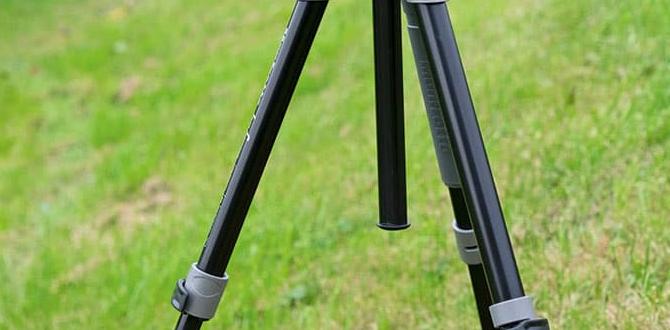Canning and preserving foods has been a longstanding tradition, allowing individuals and families to enjoy the taste and nutrition of fresh produce throughout the year. Among the wide variety of foods that can be preserved, beets stand out for their versatility and health benefits.
Whether you prefer pickled or spiced, canning beets is a simple and rewarding process that can elevate your meals and add a touch of homegrown goodness to your pantry. Here, we will explore the art of canning beets, discussing the techniques and flavor options available.
From the basics of sterilization to the various ways to incorporate spices and herbs, this guide will provide you with all the necessary knowledge and tips to easily and successfully preserve your beets. Get ready to embark on a journey of deliciousness and nutrition as we uncover the secrets of canning beets – pickled, spiced, and easy.
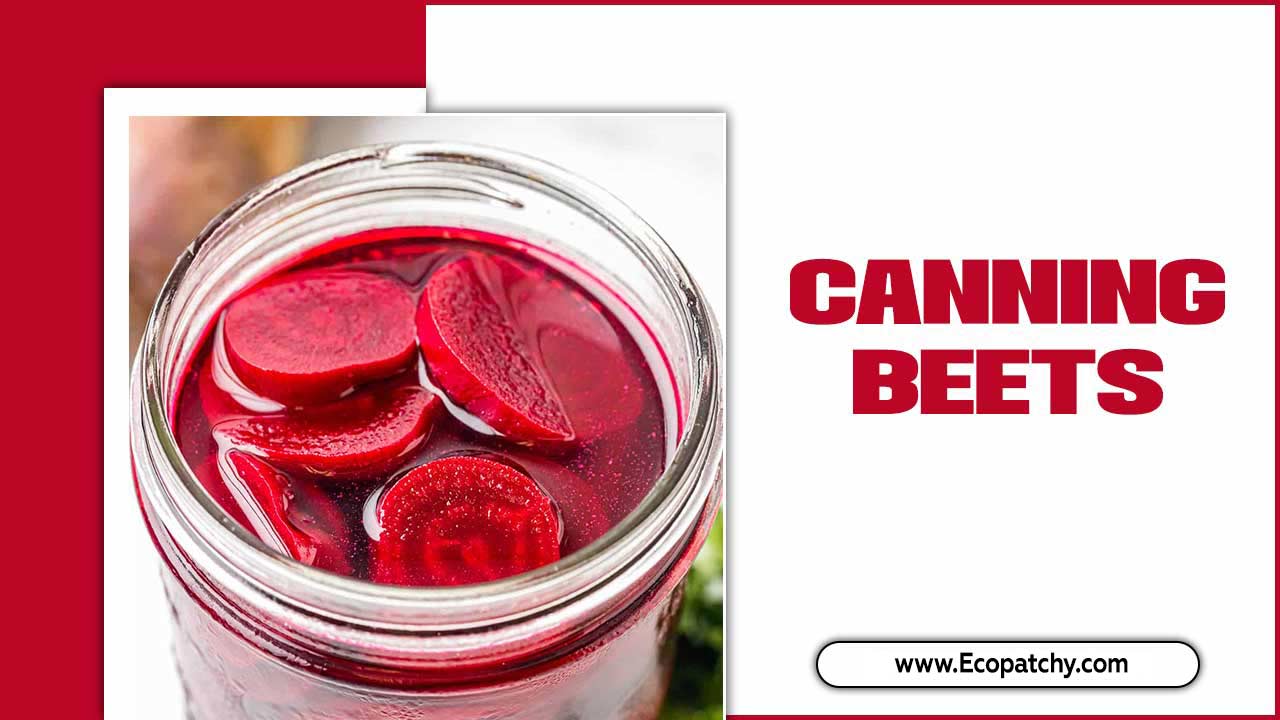
Canning Beets – Full Discussion
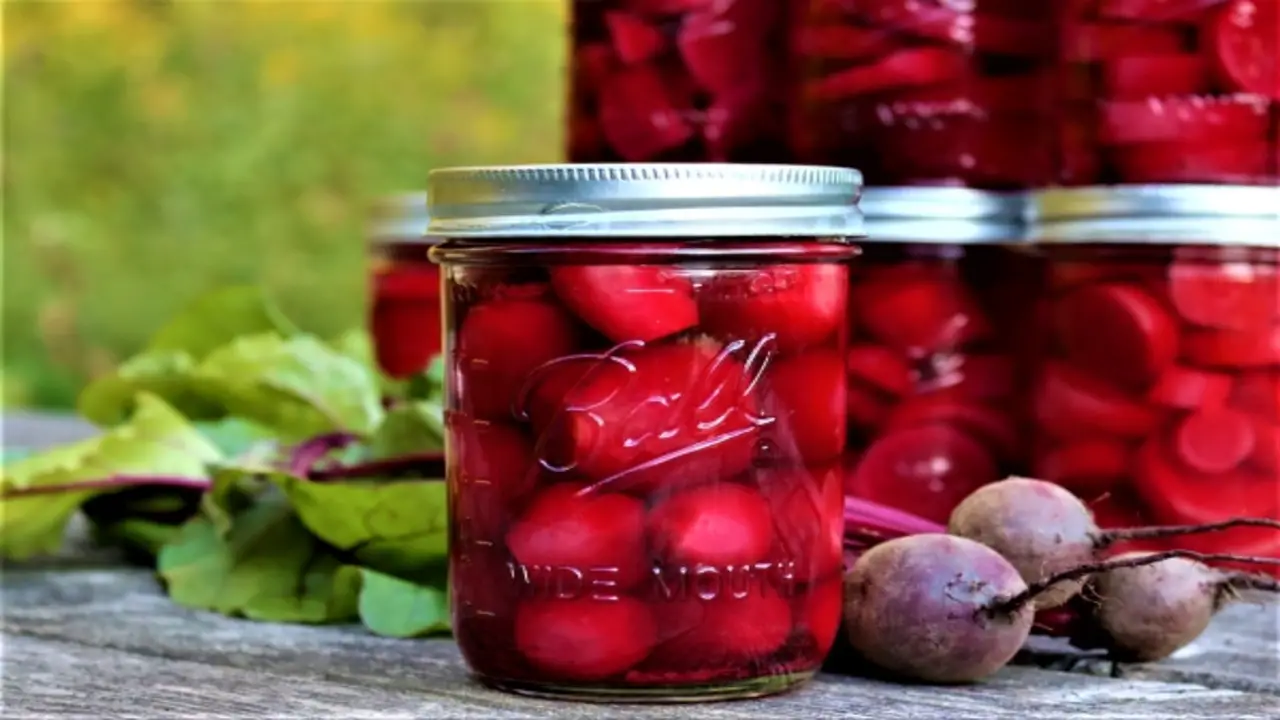
Canning beets is a preservation method that involves cooking and sealing beets in jars to extend their shelf life. Pickling and spicing the beets not only adds flavor but also enhances their taste and texture. This process is surprisingly easy and can be done in the comfort of your kitchen.
With just a few simple ingredients like vinegar, sugar, spices, and fresh beets, you can create a delicious and versatile pantry staple. Here is some information on canning beets:
- Preparation: Start by washing the beets thoroughly and removing the tops and roots. Leave about an inch of the stem intact. Trim any blemishes or bruises from the beets.
- Cooking: Place the beets in a large pot and cover them with water. Bring the water to a boil and cook the beets until tender. This usually takes about 30-45 minutes, depending on the size of the beets.
- Peeling: Once the beets are cooked, drain them and let them cool slightly. Use your hands or a knife to peel off the skin. It should come off easily. Be careful, as the beets may still be hot.
- Slicing Or Dicing: Decide whether you can make the beets whole, sliced, or diced.
How To Make The Best-Tasting Pickled Beets
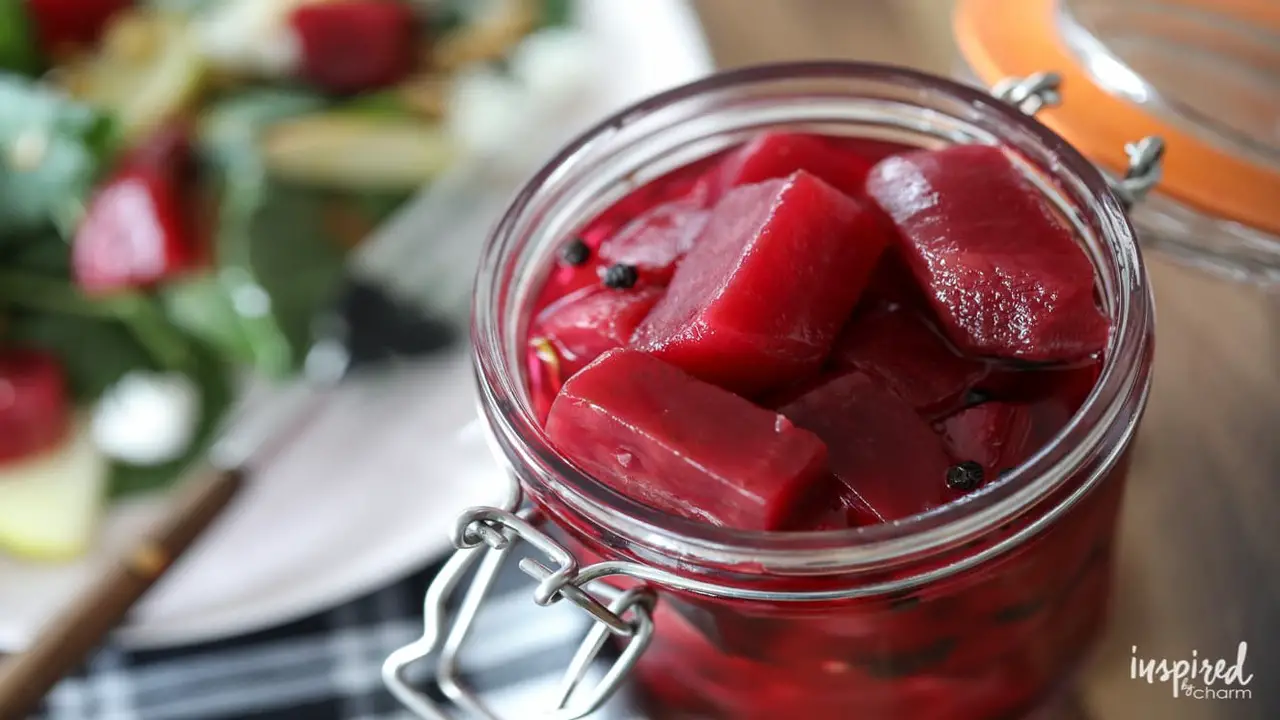
It’s important to start with fresh, high-quality beets to make the best-tasting pickled beets. Look for beets that are firm, smooth, and have vibrant colors. Once you have your beets, it’s time to get them ready for canning.
Begin by washing the beets thoroughly to remove any dirt or debris. Trim off the greens, leaving about an inch of the stems intact. This will help prevent bleeding of the color during the cooking process. Follow these steps for canning:
- Start by selecting fresh, firm beets. Look for beets that are small to medium for better texture and flavor.
- Wash the beets thoroughly to remove any dirt or debris. Trim off the tops and leave about an inch of the stem intact.
- Boil the beets in a large pot of water until they are tender. This usually takes about 30-40 minutes, but the cooking time may vary depending on the size of the beets.
- Once cooked, drain the beets and allow them to cool. Once cooled, slip off the skins and trim the remaining stems.
- Slice or dice the beets according to your preference. You can cut them into rounds, wedges, or even julienne them.
- Prepare the pickling brine by combining equal vinegar and water in a saucepan.
Pickled Beets Canning Recipe
One of the most popular ways to preserve beets’ rich flavor and vibrant color is by pickling them. With this pickled beet canning recipe, you can easily transform fresh beets into tangy, delicious pickled treats that can be enjoyed year-round. The process is surprisingly simple and requires just a few basic ingredients. Here is a simple recipe for canning pickled beets:
Ingredients:
- 4-5 pounds of beets
- 2 cups of white vinegar
- 1 cup of water
- 1 cup of granulated sugar
- 2 teaspoons of salt
- 1 cinnamon stick (optional)
- 4 whole cloves (optional)
Instructions:
- Start by washing the beets thoroughly, removing any dirt or debris. Trim off the beet greens, leaving about an inch of the stems intact.
- In a large pot, place the beets and cover them with water. Bring the water to a boil and let the beets simmer until tender (approximately 30-40 minutes, depending on size). You should be able to insert a fork into the beets easily when you cook them.
- Once the beets are cooked, drain them and let them cool. Once they are cool enough to handle.
Canning Sweet Beets Safely
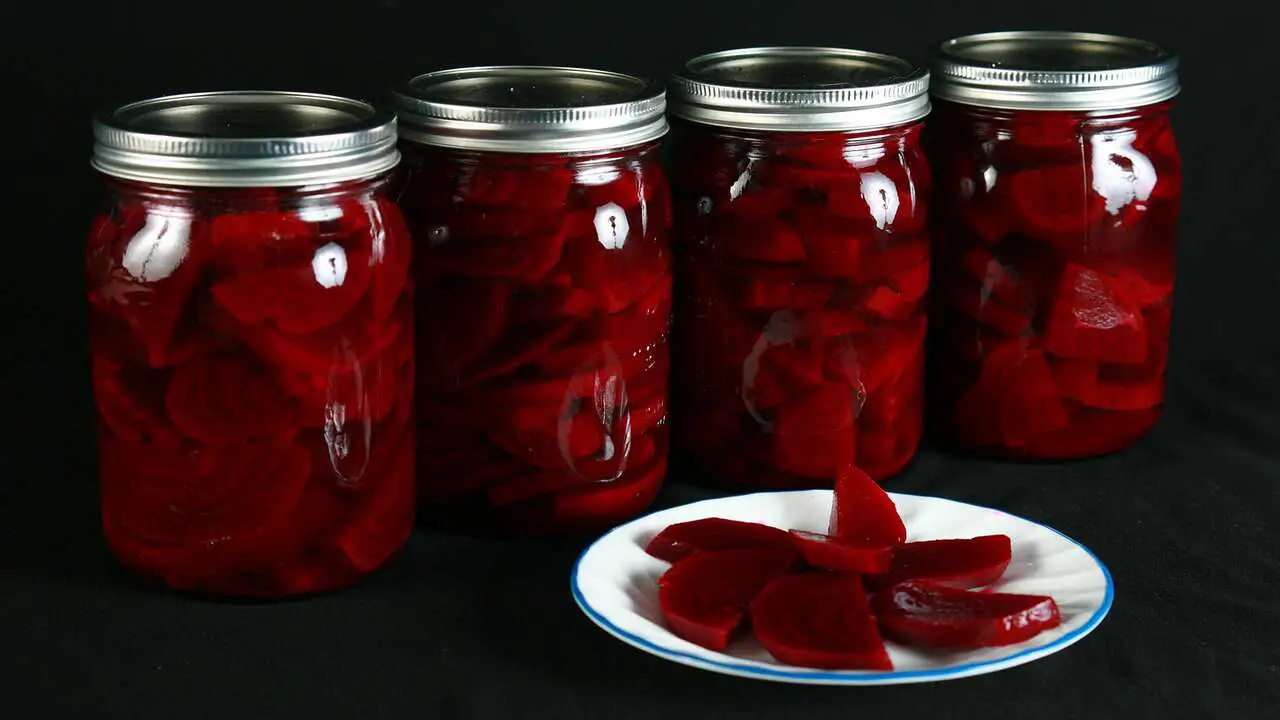
Canning sweet beets is a great way to preserve their freshness and enjoy them for an extended period. Pickled and spiced beets add a burst of flavor to any dish and provide a healthy and nutritious option for those looking to incorporate more vegetables into their diet. Canning beets is surprisingly easy and you can do it with just a few simple ingredients and equipment. Here are some steps to safely can sweet beets:
- Start by selecting fresh, firm beets that are free from any blemishes or signs of spoilage. Wash them thoroughly to remove any dirt or debris.
- Trim off the tops and roots of the beets, leaving about an inch of stem intact. This will help to prevent bleeding of color during the canning process.
- Place the beets in a large pot and cover them with water. Bring the water to a boil and cook the beets until tender. The cooking time may vary depending on the size of the beets, but it usually takes about 30-40 minutes.
- Once the beets are cooked, drain them and let them cool slightly. Then, peel off the skin using your hands or a knife. The skin should come off easily.
Protect Your Surfaces Too!
It’s important to not only focus on the preservation and storage of the beets but also to protect your surfaces during the canning process. One way to ensure the safety of your surfaces is to use a dedicated canning station or area in your kitchen. This can be a countertop or a sturdy table that is easy to clean and sanitize.
Place a protective covering, such as a large cutting board or a silicone mat, on top of your work surface is also a good idea. Here are a few tips to help you keep your countertops and other surfaces in good condition:
- Use Cutting Boards Or Chopping Mats: When peeling and chopping the beets, make sure to use cutting boards or chopping mats to prevent any damage or stains on your countertops. These surfaces provide a protective barrier and are easier to clean.
- Lay Down Towels Or Newspapers: Place towels or newspapers underneath your work area to catch any drips or spills. This will help prevent beet juice from staining or seeping into your countertops.
- Clean Spills Immediately: If any beet juice or liquid spills onto your surfaces, wipe it immediately with a clean cloth or paper towel. This will prevent any potential staining or damage.
Ingredients Required For Canned Beets
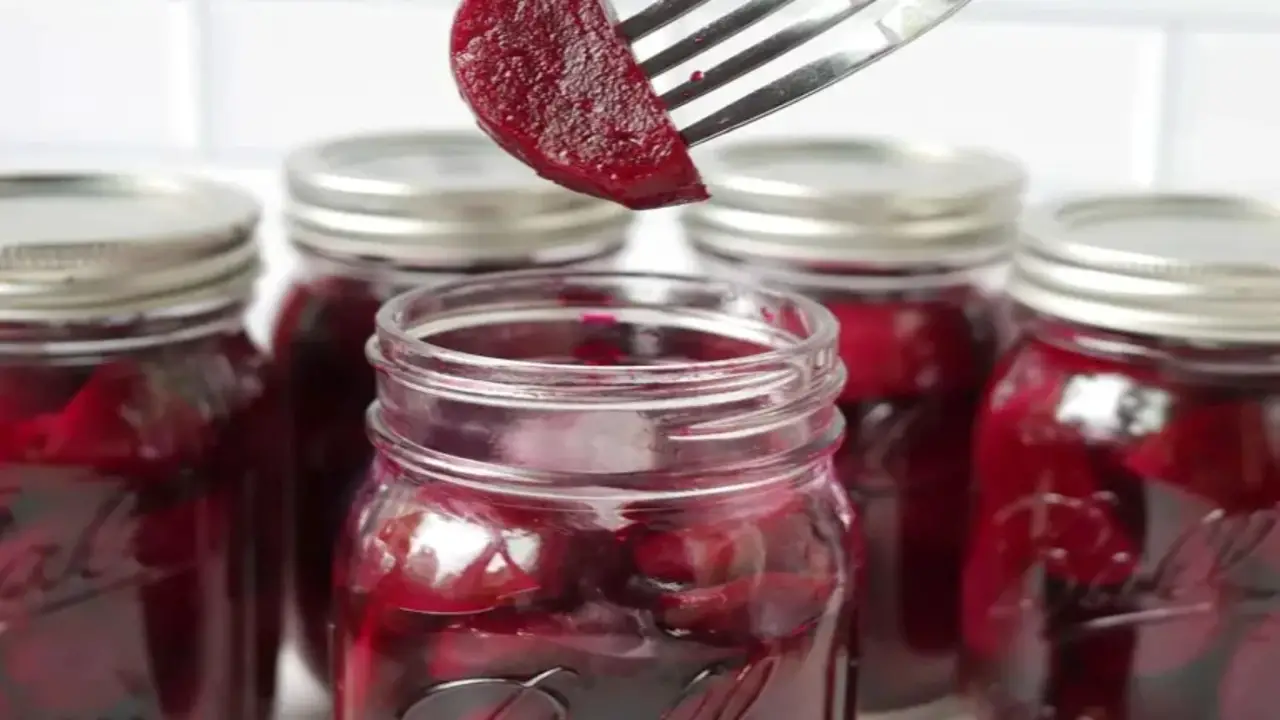
you will need vinegar, which acts as a natural preservative and gives the pickled beets their tangy flavor. White vinegar or apple cider vinegar are commonly handy options. You will need sugar or honey to enhance the flavor and add a touch of sweetness.
The amount can be adjusted based on personal preference. For flavor, spices such as cloves, cinnamon sticks, and peppercorns can be added to the pickling brine. To can beets, you will need the following ingredients:
- Fresh Beets: Choose firm beets without any blemishes or soft spots.
- Vinegar: White distilled vinegar is commonly handy for canning beets.
- Water: You will need water to cook the beets and the canning process.
- Salt: Adding salt helps enhance the flavor of the canned beets.
- Sugar (Optional): Some recipes suggest adding sugar to balance the flavors.
- Canning Jars: Make sure to use jars specifically designed for canning, with tight-fitting lids.
- Canning Lids And Rings: These are necessary for sealing the jars securely.
- Water Bath Canner: This is a large pot for processing canned beets in boiling water.
- Jar Lifter: A tool used to handle hot jars during the canning process safely.
- Canning Funnel: This helps to easily transfer the beets into the canning jars without making a mess.
Prepping Your Beets
Once the beets are cooked, drain them and allow them to cool slightly. Then, using a sharp knife, peel off the skin and slice the beets into your desired shape and size. Meanwhile, in a separate pot, combine vinegar, water, sugar, and your choice of spices, such as cloves, cinnamon, or ginger, to create a brine. Bring the br, and follow these steps:
- Start by selecting fresh, firm beets without blemishes or soft spots. Remove the beet greens, leaving about an inch of the stem attached.
- Scrub the beets thoroughly under running water to remove any dirt or debris. Trim the ends of the beets, but leave the skin intact to prevent bleeding.
- Place the beets in a large pot and cover them with water. Bring the water to a boil and cook the beets until tender. This usually takes about 30-45 minutes, depending on the size of the beets.
- Once the beets are cooked, drain them and allow them to cool slightly. Then, peel the skins off using your hands or a paring knife. The skins should easily slide off at this point.
- Next, slice or dice the beets into your desired size and shape. You can also leave them whole if preferred.
Making The Vinegar Brine
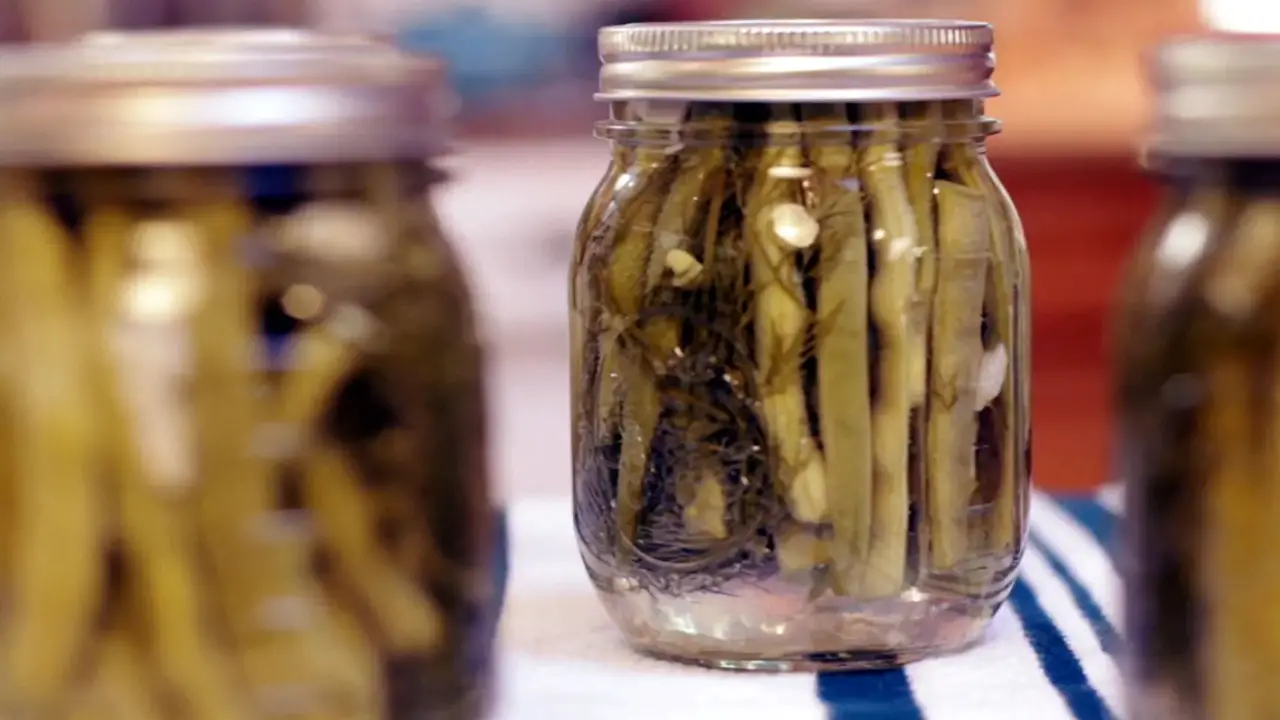
To make vinegar brine for canning beets, you will need a combination of white vinegar, water, sugar, and aromatic spices. The vinegar provides a tangy flavor that pairs perfectly with the sweetness of the beets, while the sugar adds a hint of sweetness to balance the acidity.
As for the spices, popular options include cloves, cinnamon sticks, bay leaves, and peppercorns. These spices infuse the beets with warm, comforting flavors and contribute to their overall visual appeal. You will need the following ingredients and steps:
Ingredients:
- 4 cups of white vinegar
- 4 cups of water
- 1 cup of sugar
- 2 tablespoons of pickling salt
Instructions:
- In a large pot, combine the white vinegar and water.
- Stir in the sugar and pickling salt until fully dissolved.
- Place the pot over medium heat and bring the mixture to a boil.
- While waiting for the brine to boil, prepare your beets by washing, peeling, and cutting them into desired sizes.
- Once the brine is boiling, carefully add the beets to the pot.
- Reduce the heat to a simmer and let the beets cook in the brine for 10-15 minutes or until they become tender.
- While the beets are cooking, sterilize your canning jars in boiling water.
Prep The Mason Jars And Canner
Sterilize the jars and lids to prepare the mason jars and canner for canning beets. You can do this by placing the jars and lids in a large pot filled with water and bringing it to a boil. Let them boil for about 10 minutes to ensure they are clean and bacteria-free. While the jars are sterilized, you can start preparing the beets. Wash them thoroughly, removing any dirt or debris, and trim off the tops and roots.
Then, you can leave the skins on or peel them, depending on your preference. Once the beets are cleaned and prepped, you can slice or dice them into desired shapes and sizes. Now that you have sterilized the jars and the beets are ready, it’s time for you to make the pickling brine. This, follow these steps:
- Start by gathering all the necessary equipment, including mason jars, lids, rings, a canner or large stockpot, a jar lifter, a canning funnel, and a clean dishcloth or towel.
- Inspect the mason jars for any cracks or chips. Discard any jars that are damaged, as they may not seal properly.
- Wash the mason jars, lids, and rings with soap and hot water. Rinse them thoroughly to remove any soap residue.
- Place the mason jars in a large stockpot or canner filled with water. Make sure the jars are fully submerged. Bring the water to a boil and let the jars boil for 10 minutes to sterilize them. Keep the jars in the hot water until ready to use.
- In a separate small saucepan, place the lids and rings. Cover them with water
Packing & Canning Sweet Pickled Beets
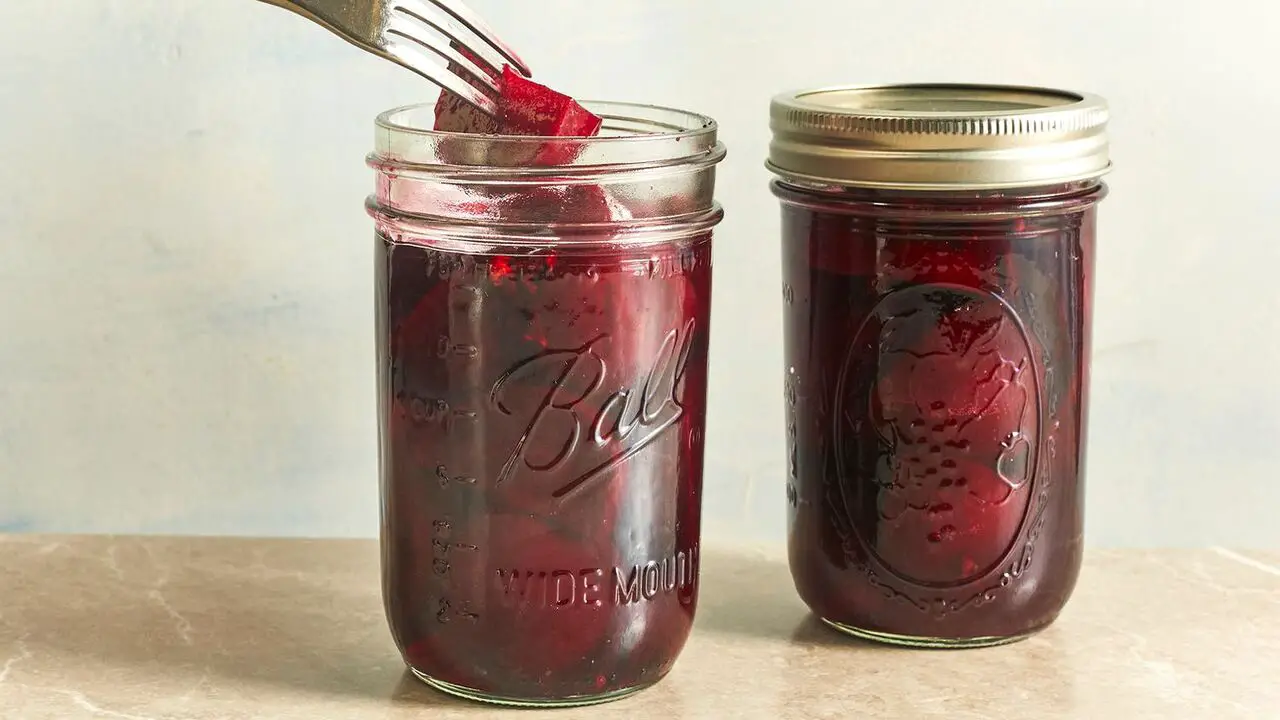
Packing and canning sweet pickled beets is a great way to preserve this delicious vegetable. Whether you grow your beets or buy them fresh from the market, canning them allows you to enjoy their tangy and spiced flavor all year round. The process is surprisingly simple, making it accessible even for those new to canning. Pack the beets tightly into sterilized jars, and then pour the hot brine over them:
- Start by selecting fresh and firm beets. Remove the greens, leaving about 1 inch of the stem intact. Wash the beets thoroughly.
- Place the beets in a large pot and cover them with water. Bring to a boil and cook until tender when pierced with a fork, usually around 30-45 minutes, depending on their size.
- Once cooked, drain the beets and let them cool until they can be handled. Peel the skin off using your hands or a knife. Cut off the stem and root ends.
- In a large pot, prepare a sweet pickling solution by combining 3 cups of vinegar, 2 cups of water, and 2 cups of sugar. Add spices like cloves, cinnamon, and allspice for extra flavor.
Processing The Jars Of Pickled Beets
A simple and rewarding task that allows you to enjoy the delicious flavors of beets all year round. Once you have prepared your beets by washing and trimming them, it’s time to start the canning process. Here is some information on processing jars of pickled beets:
- Start by selecting fresh, firm beets. Remove the tops, leaving about an inch of stems. Wash the beets thoroughly to remove any dirt and debris.
- Place the beets in a large pot and cover them with water. Bring the water to a boil and cook the beets until they are tender when pierced with a fork. This usually takes about 30-45 minutes, depending on the size of the beets.
- Once the beets are cooked, drain them and allow them to cool. Once cool, peel off the skin using your hands or a knife. The skin should come off easily.
- Slice or dice the beets according to your preference. You can cut them into rounds, wedges, or even shred them.
- In a separate pot, prepare the pickling solution. This typically includes vinegar, water, sugar, spices such as cloves and cinnamon.
One Of My Beet Jars Didn’t Seal, Now What?
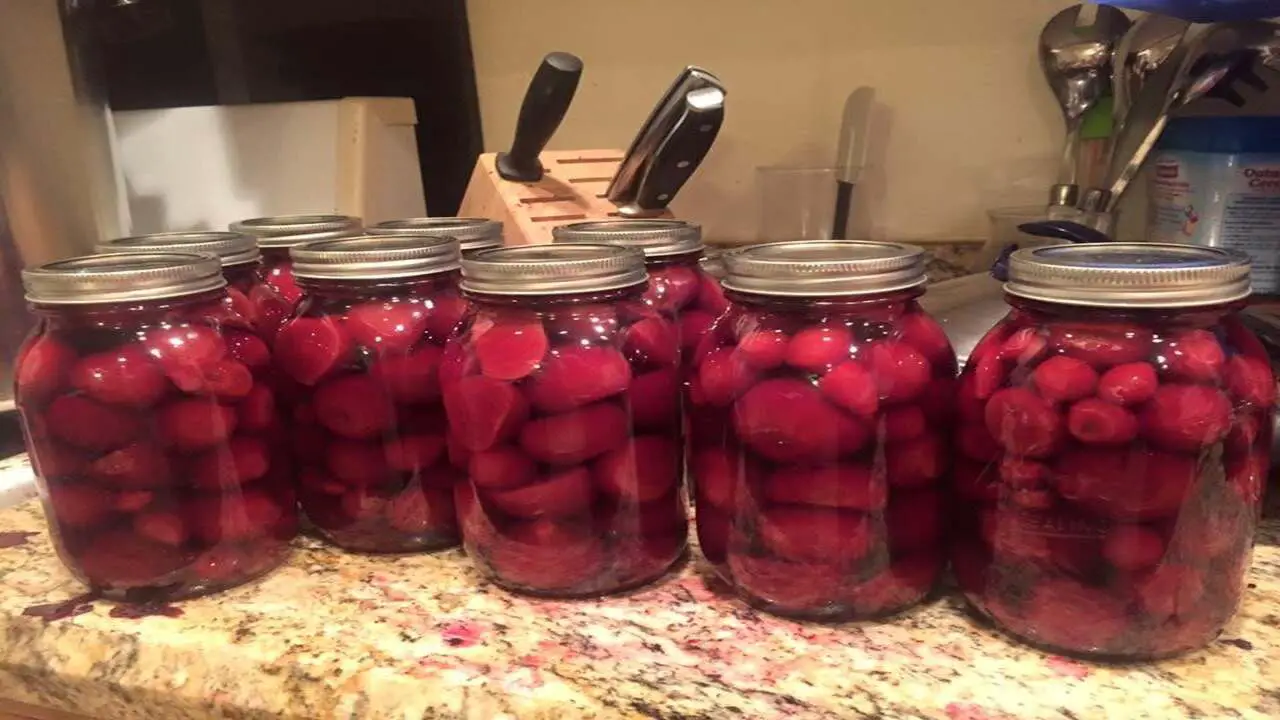
If one of your beet jars didn’t seal properly after canning. Ensure that you tighten the screw band securely but not overly tight. If all else fails and the jar won’t seal, you can refrigerate and consume the beets within a few weeks. While it may be, there are a few steps you can take to address the issue:
- Check The Seal: First, ensure the jar lid is properly sealed. Press down on the center of the lid to see if it pops up and down. If it does, it means the jar did not seal correctly.
- Refrigerate Or Reprocess: You have two options if the jar didn’t seal. You can either refrigerate the jar and consume the beets within a few days or reprocess the jar to ensure a proper seal.
- Reprocessing The Jar: To reprocess the jar, remove the lid and check the jar rim for any nicks or cracks. Replace the lid with a new one, ensuring it is clean and undamaged. Place the jar in a canning pot filled with water and bring it to a boil.
How Long Does This Pickled Beets Recipe Last Once Canned?
Once properly canned, pickled beets can last up to 1 year if stored in a cool, dark place. It is important to ensure the jars are properly sealed, and the beets are thoroughly cooked and pickled before canning to maximize their shelf life. Labeling the jars with the date of canning is recommended for reference.
Pickled Beets – All The Uses
Pickled beets are a delicious and versatile food that can be handy in various ways. They make a great addition to salads, sandwiches, or charcuterie boards, adding a vibrant burst of color and tangy flavor.
The process of canning beets is surprisingly easy, making it a practical and cost-effective way to enjoy this versatile vegetable year-round. By pickling and spicing the beets, you can elevate their natural sweetness with the tanginess of vinegar and the warmth of spices. Here are some popular uses for pickled beets:
- Salad Topping: Pickled beets add a tangy and slightly sweet flavor to salads. Simply chop them up and sprinkle them over your favorite greens for an extra flavor.
- Sandwich Ingredient: Add a layer of pickled beets to your sandwiches for a unique twist. They pair well with fillings like cheese, deli meats, or vegetarian options like hummus or avocado.
- Appetizer: Serve pickled beets as part of a charcuterie or antipasto platter. Their vibrant color and tangy taste make them a great addition to cheeses, cured meats, olives, and bread.
- Side Dish: Pickled beets can be served as a side dish alongside roasted meats, grilled fish, or even vegetarian dishes. They provide a refreshing contrast to rich or savory
Are Pickled Beets The Same As Harvard Beets?
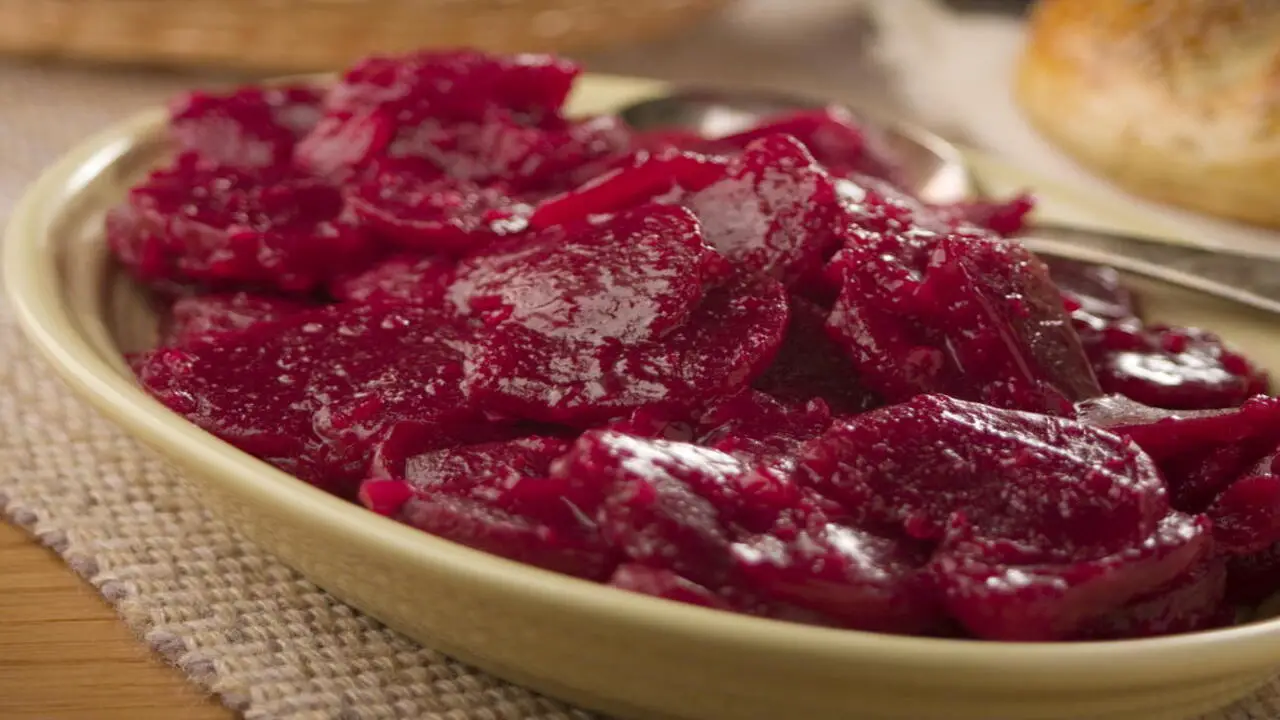
Pickled beets and Harvard beets are similar but not the same. Both involve canning beets but differ in terms of the ingredients used in the pickling process.
Pickled beets are typically cooked and preserved in vinegar, sugar, and spices. They have a tangy and slightly sweet flavor. On the other hand, Harvard beets are cooked and then pickled in a sauce made from vinegar, sugar, and cornstarch.
This sauce gives Harvard beets a thicker and sweeter taste than pickled beets. While they both result in canned beets, the specific pickling method and flavor profile differ. So, although they share similarities, pickled and Harvard beets are not the same.
Conclusion
canning beets is a simple and satisfying way to enjoy this versatile vegetable year-round. Whether you prefer pickled or spiced, the canning process is easy and can be adapted to your taste. The first step in canning beets is to select fresh, firm beets from your local farmer’s market or grocery store.
Look for beets that are free from blemishes and have smooth skin. Once you have your beets, wash them thoroughly to remove any dirt or debris. Next, trim the greens, leaving about an inch of the stems intact. This will help prevent bleeding during the canning process.
After preparing the beets, it’s time to start the pickling or spicing process. You can confidently preserve your beets and create delicious dishes throughout the seasons by following proper canning techniques. So why not try canning beets and add some homemade goodness to your pantry today?
FAQ
1.What Are The Essential Steps And Ingredients Needed To Can Pickled Beets?
Ans: You will need fresh beets, vinegar, sugar, water, pickling salt, and pickling spices to pickled beets. The essential steps involve cleaning and trimming the beets, boiling them until tender, and peeling and slicing them. Combine vinegar, sugar, water, pickling salt, and pickling spices in a separate pot to create a brine.
2.How Long Do Pickled Beets Typically Need To Be Processed In A Canner To Ensure They Are Safely Preserved?
Ans: Pickled beets typically need to be processed in a canner for around 30 minutes to ensure they are safely preserved.
3.Are There Any Variations Or Additional Spices That Can Be Added To The Pickling Liquid For A Unique Flavor Profile?
Ans: Yes, several variations and spices can be added to the pickling liquid for a unique flavor profile. Some popular options include adding mustard seeds, dill seeds, celery seeds, cloves, cinnamon sticks, bay leaves, or even chili flakes for a spicy kick. These spices can enhance the flavor and add complexity to the pickles, allowing for endless possibilities and customization based on personal preference.
4.Including The Specific Spices That Work Well With This Method?
Ans: Several spices, such as cumin, paprika, garlic powder, and black pepper, work well with this cooking method. These spices add depth and flavor to the dish, enhancing the overall taste. However, it ultimately depends on the specific recipe and personal preference. Experimenting with different spices can help create unique and delicious flavor profiles.
5.Are There Any Tips Or Tricks For Ensuring The Beets Retain Their Vibrant Color During The Canning Process?
Ans: Yes, there are several tips for ensuring beets retain their vibrant color during the canning process. Firstly, choose fresh beets that are firm and have a deep, rich color. Trim off the beet greens, leaving about an inch of stem intact. Avoid overcooking the beets, as this can cause them to lose color. Blanching them in boiling water for a few minutes before canning can help preserve their vibrant hue.







